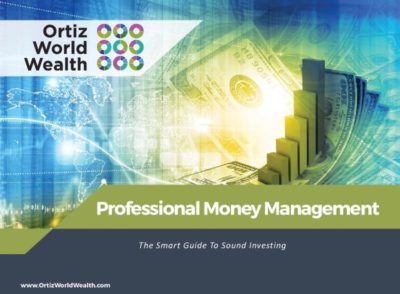
27 Mar Endowment Model #4: Equities
Endowment Model #4: Equities.
In this next edition of the Ortiz World Wealth Endowment Model series, we will be discussing one type of Non-Guaranteed asset in particular, equities. An easier and much more recognizable term for equities is stocks. The bread and butter of the investment world, stocks are the lifeblood of Wall Street and usually the first thing that comes to mind when someone utters the word, ‘investment’. Although they are the most common form of investment, they still come with a learning curve. This article is going to bring you up to speed on them so that you can better understand the role that these types of equities play in your investment portfolio.
 First things first, what are equities? Well just like buying real estate, you own a piece of a company, similar to a piece of property. What your equity share is worth depends on that company’s growth, revenue, and general performance. Basically, you are a part-owner of the company. As a part-owner you have a say in what goes on in the company, depending on how much of the company you own. In common cases, the stockholders elect a board of directors to vote on corporate policies. If liquidation was to occur with that company, common shareholders have rights to a company’s assets after bondholders, preferred shareholders, and other debt holders are paid in full. All these different classes of shareholders can get confusing, but it’s all really just separate forms of I.O.U.s with different rules to go along with them.
First things first, what are equities? Well just like buying real estate, you own a piece of a company, similar to a piece of property. What your equity share is worth depends on that company’s growth, revenue, and general performance. Basically, you are a part-owner of the company. As a part-owner you have a say in what goes on in the company, depending on how much of the company you own. In common cases, the stockholders elect a board of directors to vote on corporate policies. If liquidation was to occur with that company, common shareholders have rights to a company’s assets after bondholders, preferred shareholders, and other debt holders are paid in full. All these different classes of shareholders can get confusing, but it’s all really just separate forms of I.O.U.s with different rules to go along with them.
In regards to the endowment model however, common stock is the riskiest of them all. Even more so than bonds or preferred stock. Common stock is usually found outperforming their related investments in the long-run. They also have the highest liquidity and no real ceiling for growth. When it comes to stocks, there are basically three different types; growth stock, value stock, and dividend stock. The differences between these three very similar investment vehicles are small but distinctive, and can definitely make the difference in an investment portfolio.
Let’s start with the elephant in the room, growth stock. A growth stock is basically stock in a company expected to grow at a rate that is significantly higher than that of the market average. So, this would be like buying Netflix stock in 2007 right when they announced their streaming service or buying stock in Apple in 1976. The point is, that these stocks are the ones that people are expecting to blow up. Which could or could not happen. These stocks do not pay dividends, they instead choose to reinvest their earnings into the company in order to maximize growth in the short term. This means that holders in growth stock only profit through capital gains, or how much more valuable your stock becomes based on that company’s performance. 
Value stocks work a little bit differently than a growth stock. A value stock is a little harder to find. Where growth stock is an up and coming business, value stocks are established stocks that are being undervalued and underpriced relative to the rest of the market. These stocks are usually in companies which are counted to be in business for a long time, but due to market speculations or events in the news. When stocks drop due to announcements on the news and negative speculations, certain investors jump on this opportunity by looking at the fundamentals of the company. This is a far more analytical approach compared to the way investors buy growth stocks. There is a lot of detective work that goes into buying value stocks. You have to understand why a company’s stock price is dropping and if the timing is right to buy now.
Dividend stocks are just like common stock except that you are paid out a percentage of the profit. This is usually done by well-established companies with a record of delivering earnings to shareholders in a timely manner. These stocks are valued by how much they are worth, as well as how much the dividend is paying out. So there are different variables to consider when looking into these types of equities.




No Comments